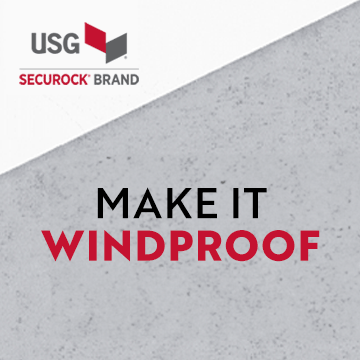aluminum with cca cedar
« Back To Roofers TalkNewbie here. I started roofing with my father at an early age went partners and now have had my own company for about 7 years. I do mostly residental all types of comp shingles, cedar, slate, metal work and flat roofing when necessary. My question is it ok to use .032 aluminum standing seam panel roofs above cca treated cedar shakes. I would use ice and water shield between the contact areas. I appreciate any help and look forward to joining in other topics with you fellow roofers.
You’re right about 300-series stainless steel being a good choice for compatibility; it’s known for its corrosion resistance. It's also important to follow the guidelines from the IBC to ensure that all materials used in a roofing system are compatible and won’t degrade over time.
The reference to the NRCA's position on non-treated wood is also insightful. It’s interesting to see that they consider it acceptable in certain conditions, especially with proper moisture management. This flexibility can help reduce costs while maintaining performance.
I think that 300-series stainless steel might be a better choice as I think it would be compatible.
Section 15 of the IBC says that you should not use incompatible materials as part of a roofing system.
This really doesn't have much to do with your question but following is a pretty interesting paper that states the position of the roofing industry and pressure treated wood.
http://www.rci-online.org/interface/2009- snow rider -02-metal-construction-association.pdf
Please note on page 32 the position of the NRCA which says:
"In many instances, the use of non treated, construction-grade wood is suitable for use in roof assemblies as blocking or nailers, provided reasonable measures are taken to ensure the non treated wood remains reasonably dry when in service. Where a specific construction detail provides for a secondary means of waterproofing, NRCA now considers the use of non treated, construction-grade wood to be an acceptable substitute for treated wood.â€
-WildBill
You’re right about 300-series stainless steel being a good choice for compatibility; it’s known for its corrosion resistance. It's also important to follow the guidelines from the IBC to ensure that all materials used in a roofing system are compatible and won’t degrade over time.
The reference to the NRCA's position on non-treated wood is also insightful. It’s interesting to see that they consider it acceptable in certain conditions, especially with proper moisture management. This flexibility can help reduce costs while maintaining performance.
It’s great that you already have such experience in roofing work. Using aluminum standing seam panels over CCA treated cedar shingles is fine, especially if you use an ice and water shield between the contact areas this will help prevent corrosion and extend the life of the roof I also see you are discussing fences, if you really need advice then hog wire fence panels would be a great solution. It seems to me that my advice can help you.
True you can separate the panels,but you still have to use clips and fastners made of aluminum.The fastners would fail so its really a no go on aluminum.
I do understand that aluminum does react with the treatment on the wood but am not convinced that it would affect the painted aluminum just from run off. There would be no direct contact from the aluminum, which has a baked on painted finish, to the cca treated shakes. I have not seen any definite proof that the treatment would discolor or corode the aluminum when not in direct contact. I am considering all cost effective options and would appreciate any further help.
this is for CCA treated. Same warning Nails, Fasteners and Fittings
Hot dipped galvanized or stainless steel fasteners and fittings are recommended. Anti-corrosion coatings applied to fasteners and fittings in contact with treated wood will enhance long-term performance. Direct contact of CCA treated wood with aluminum fasteners and fittings is not recommended.
Here is a copy and paste from the supplier PRODUCTS: ACQ Treated Wood ACQ Treated Wood from Great Southern Wood
Wood products treated with ACQ (Alkaline Copper Quaternary) preservatives are available to retailers, consumers, builders and architects for outdoor building projects that require protection against rot, fungal decay and termite attack. ACQ treated products have been commercially used since 1991 throughout Europe, Asia, and the United States. and can be used for many backyard and commercial projects such as decks, fences and landscaping.
They are:
â— Durable and designed for outdoor construction.
â— Lifetime Residential and Agricultural Limited Warranty against structural damage caused by fungal decay and termites. Click here for specific warranty provisions.
â— Limited 15 Year Warranty on Fence Boards. Click here for specific warranty provisions.
â— Use for structural lumber, sill plates, outdoor furniture, patios, decks, garden edging, and landscaping structures
â— Building code compliant
â— Copper-based preservative with a co-biocide
â— ACQ preservatives meet AWPA standards.
ACQ Weathering Information
Freshly treated ACQ products begin with a dark, greenish color and will over time turn to a light tan/brown color upon exposure to sunlight. As with most outdoor wood products, they will eventually fade to gray over time.
Characteristics of the ACQ Preservative
Based on the well-established effectiveness of copper combined with an organic quaternary compound applied to wood by pressure treatment, the alkaline copper quaternary preservative system from Osmose, Inc. provides long-term protection of wood exposed in exterior applications. Copper and quaternary compounds are effective fungicides and termiticides. Together they provide protection from a broad spectrum of fungi and termites. The active ingredients in products treated with ACQ preservatives, copper oxide and quaternary compounds, are dissolved in an alkaline carrier. Depending on the desired product application, wood species, and exposure hazard, the ACQ preservative system may be formulated with a number of specialty additives such as water repellents to enhance product performance.
Characteristics of ACQ Preserved Wood Products
Properly treated and processed products with ACQ preservatives are similar to traditional pressure treated wood products - both are pressure treated, long lasting, durable, clean to the touch and have no objectionable odor. More than a decade of field test performance and commercial use worldwide establishes the proven effectiveness of ACQ and the preservative technology for protecting against termites and fungal decay. Products treated with ACQ preservatives offer termite and fungal decay protection similar to that of traditional treated wood. Ground contact testing of treated stakes confirm that while untreated Southern Yellow Pine stakes fail in less than 5 years, stakes preserved with ACQ preservatives perform similarly to traditionally treated stakes.
Products treated with ACQ preservatives are available in many softwood species. Approved uses include: Above Ground 5/4" Decking & Specialties, Above Ground General Use, and Ground Contact. ACQ treated products are building code compliant.
Warranty Information
A Lifetime Residential and Agricultural Limited Warranty is offered on products with ACQ preservatives for material used in residential and agricultural applications, plus a limited 15 year warranty is offered on fence boards treated with ACQ preservatives. Click here for specific warranty provisions.
Fastener Information
Wood products treated with ACQ preservatives are designed for long-term performance in outdoor applications and, therefore, require high quality, corrosion-resistant nails, screws, and hardware. Use hot-dip galvanized (conforming to ASTM Standards: ASTM A153 for hot-dip fasteners and ASTM A653, Coating Designation G-185 for hot-dip connectors and sheet products), type 304 or 316 stainless steel, or other fasteners and hardware as recommended by the hardware manufacturer. Direct contact of products treated with ACQ preservatives with aluminum fasteners is not recommended. See “Important Information†below.
Thanks for the replies. I meant to say the aluminum panels would be below the cca treated shakes. I guess I will recommend going with non treated shakes.
I think that 300-series stainless steel might be a better choice as I think it would be compatible.
Section 15 of the IBC says that you should not use incompatible materials as part of a roofing system.
This really doesn't have much to do with your question but following is a pretty interesting paper that states the position of the roofing industry and pressure treated wood.
http://www.rci-online.org/interface/2009-02-metal-construction-association.pdf
Please note on page 32 the position of the NRCA which says:
"In many instances, the use of non treated, construction-grade wood is suitable for use in roof assemblies as blocking or nailers, provided reasonable measures are taken to ensure the non treated wood remains reasonably dry when in service. Where a specific construction detail provides for a secondary means of waterproofing, NRCA now considers the use of non treated, construction-grade wood to be an acceptable substitute for treated wood.â€























